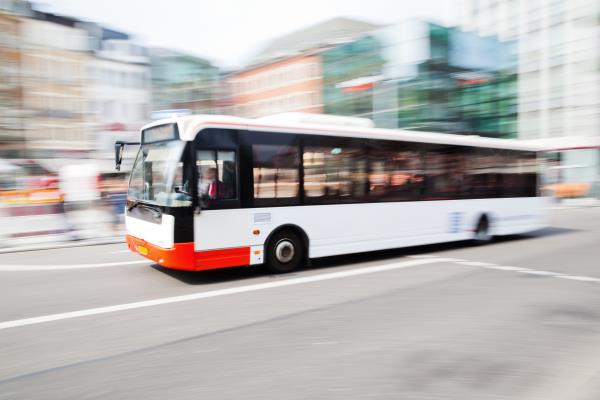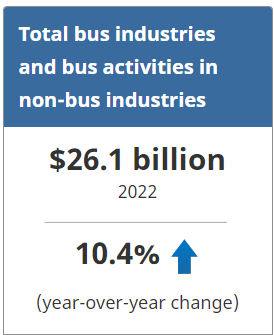
In 2022, total revenues earned by passenger bus and urban transit companies operating in Canada were $26.1 billion, an increase of 10.4% from 2021 and 13.0% above those reported in 2019, before the COVID-19 pandemic.
Passenger bus and urban transit industries started to recover from the pandemic downturn in 2021. Border and travel restrictions were first eased during the summer of 2022 and eventually fully removed on October 1, 2022.
Subsidies continue to sustain urban transit
The 101 Canadian urban transit agencies reported revenues of $22.2 billion in 2022, accounting for 85.2% of the passenger bus and urban transit industry. Revenues were bolstered by operating subsidies, which amounted to $8.5 billion.
In 2022, total transit passenger trips increased to 1.4 billion, up 50.7% from 2021. As reported by the monthly release on urban public transit estimates, ridership continued recovering into 2022. For 2022 as a whole, ridership reached more than half (56.0%) of that reported in 2019.
As public transit was deemed an essential service throughout the pandemic, employment in the industry remained stable in 2022 compared with 2021, while the total revenue-kilometres of service provided was marginally higher.
Passenger bus industries recovering
In 2022, 13 interurban and rural transportation companies (or inter-city) reported $243.4 million in revenues, up 46.0% from 2021 and more than 70% of the average annual revenues earned by intercity carriers from 2017 to 2019, before the pandemic.
As travel restrictions eased and tourism improved, the 117 charter and sightseeing bus companies reported a sharp increase in total revenues in 2022 to $444.8 million, up 84.6% from 2021, albeit 34.7% below the 2019 level. According to the National Travel Survey, domestic travel by Canadians in 2022 reached 94.0% of the 2019 pre-pandemic level. However, trips by private modes of transportation such as motor vehicle were faster to recover than public modes such as bus and train.
Total revenues reported from the 421 school and employee bus operators were down 6.2% from 2021 to $2.5 billion in 2022, while other transit and ground passenger transportation companies, such as airport shuttles, reported an increase in revenues of 37.1% over the same period.
Table 1: Total revenue, passenger bus and urban transit, 2017 to 2021

Source(s): Table 23-10-0081-01.
Tables
Access the latest table(s).
Note: some data tables may best be viewed on desktop.
Note aux lecteurs
The Annual Passenger Bus and Urban Transit Survey collects financial and operating information from companies operating in Canada.
Data for 2020 and 2021 have been revised based on updated information.
The survey covers the following North American Industry Classification System (NAICS) 2017 industries: urban transit systems (NAICS 485110); interurban and rural bus transportation (485210); school and employee bus transportation (485410); charter bus industry (485510); other transit and ground passenger transportation (485990); and scenic and sightseeing transportation, land (487110).
Prior to reference year 2022, a growing number of ridesharing operators (i.e., drivers) were classified to the Other transit and ground passenger transportation (NAICS 485990) industry. In the 2022 NAICS, ridesharing operators are now classified in Taxi services (NAICS 485310), which is not covered by this survey. The impact of including ridesharing operators in the Other transit and ground passenger transportation industry is estimated to be about 1.5% of total other transit and ground passenger transportation revenues. For further information, please contact statcan.transportationstatistics-statistiquesdutransport.statcan@statcan.gc.ca.
The Transportation Data and Information Hub, a web portal developed jointly by Statistics Canada and Transport Canada, provides Canadians with online access to comprehensive statistics and measures on the country's transportation sector.